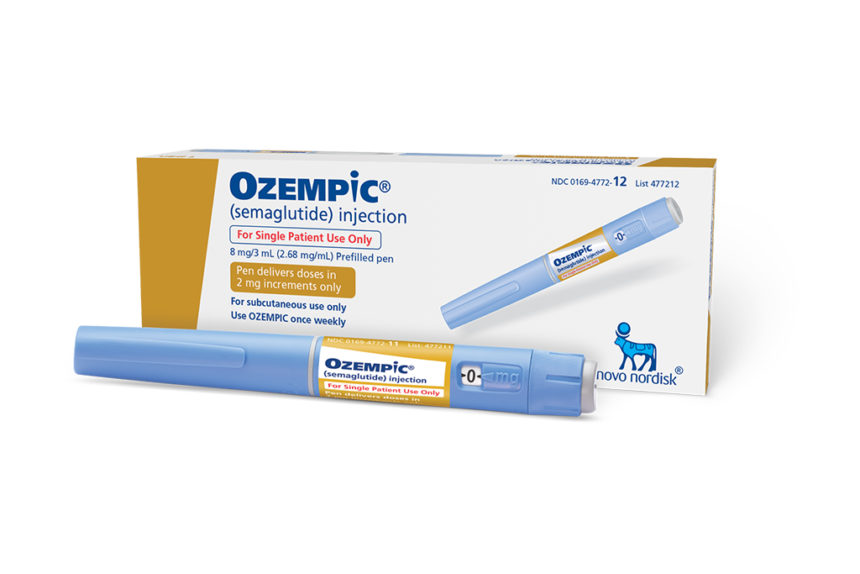Novo Nordisk recently disclosed a shortfall of Ozempic and said that the use of the diabetes injection for weight loss has exacerbated the existing supply crunch.
The acknowledgment comes as the company deals with an ongoing shortage of fellow semaglutide-based drug Wegovy that forced Novo to put launch activities for the new obesity drug in limbo earlier this year.
Novo said it’s currently experiencing “intermittent supply disruptions” on the 0.25 mg and 0.5 mg Ozempic injectable pen doses due to the combination of “incredible demand coupled with overall global supply constraints,” a spokesperson said.
Ozempic, approved by the Food and Drug Administration in 2017 for treating patients with Type 2 diabetes, has been in short supply in the U.S. since at least August, according to the FDA.
The American Society of Health-System Pharmacists noted that the shortages, which include the aforementioned doses along with 1 mg and 2 mg strengths, should be resolved by early 2023, according to a Dec. 7 update. The FDA said the supply pinch on the 0.25 and 0.5 formulations will “continue through January 2023.”
Asked to what extent off-label use is aggravating this shortfall, Novo responded:
“While we recognize that some healthcare providers may be prescribing Ozempic for patients whose goal is to lose weight, it is up to the clinical discretion of each healthcare provider to choose the best treatment approach for their patients.”
The company continued: “Novo Nordisk does not promote, suggest, or encourage off-label use of our medicines and is committed to fully complying with all applicable U.S. laws and regulations in the promotion of our products. We trust that healthcare providers are evaluating a patient’s individual needs and determining which medicine is right for that particular patient.”
The Australian Therapeutic Goods Administration (TGA), meanwhile, warned earlier this year of an Ozempic supply squeeze, connecting it to “extensive prescribing for obesity management, for which Ozempic is not indicated.”
The shortage of Ozempic, which boosts insulin sensitivity and also suppresses appetite, often leading to weight loss, coincided with the drug’s massive popularity on TikTok as a strategy for slimming down, as well as becoming a hot topic in Hollywood celebrity circles. Its cousin, Wegovy, is a lower-dose version of the same molecule, semaglutide, a glucagon-like peptide-1 (GLP-1) receptor protein treatment.
A once-a-day semaglutide pill called Rybelsus, also sold by Novo, was approved by the FDA in 2019.
Wegovy was approved by the FDA in June 2021 as a once-weekly injection for people who are obese or overweight with a coexisting condition related to weight, such as high blood pressure, Type 2 diabetes or high cholesterol.
However, Novo was soon hit by higher-than-expected demand, as well as supply issues, that prompted the drugmaker to put marketing on hold as of March. The ASHP report lists all dosages of the drug as being affected by the shortage.
On its latest earnings call, the company said it was aiming to restock the U.S. market this month, which should enable prescribing to kick back in and commercial activities to resume.
“We are on track to make all dose strengths of Wegovy available towards the end of the year and commercial re-launch is expected to commence next year,” Novo reiterated by email.
In terms of ex-U.S. launches, Novo said it introduced Wegovy in Denmark on Monday, so its European debut has started. That’s despite a report from Bloomberg that European rollouts in the U.K. and elsewhere had been delayed “into next year.”
Meanwhile, Australia’s TGA advised in a statement last month on the worldwide shortage that Ozempic will be unavailable in the country until the end of March 2023 and that off-label prescribing contributed to the “unexpected increase in demand.”
“We did anticipate that Ozempic would grow, just not at the pace that we are seeing,” Novo’s spokesperson explained. “For patients with Type 2 diabetes, GLP-1 medicines have become well-established treatments due in part to continued innovation within the class and increased utilization.”
She said the company has invested about $1.6 billion this year to expand production capacity, adding, “We take this situation very seriously and are doing everything we can to be able to meet demand as fast as possible.”







